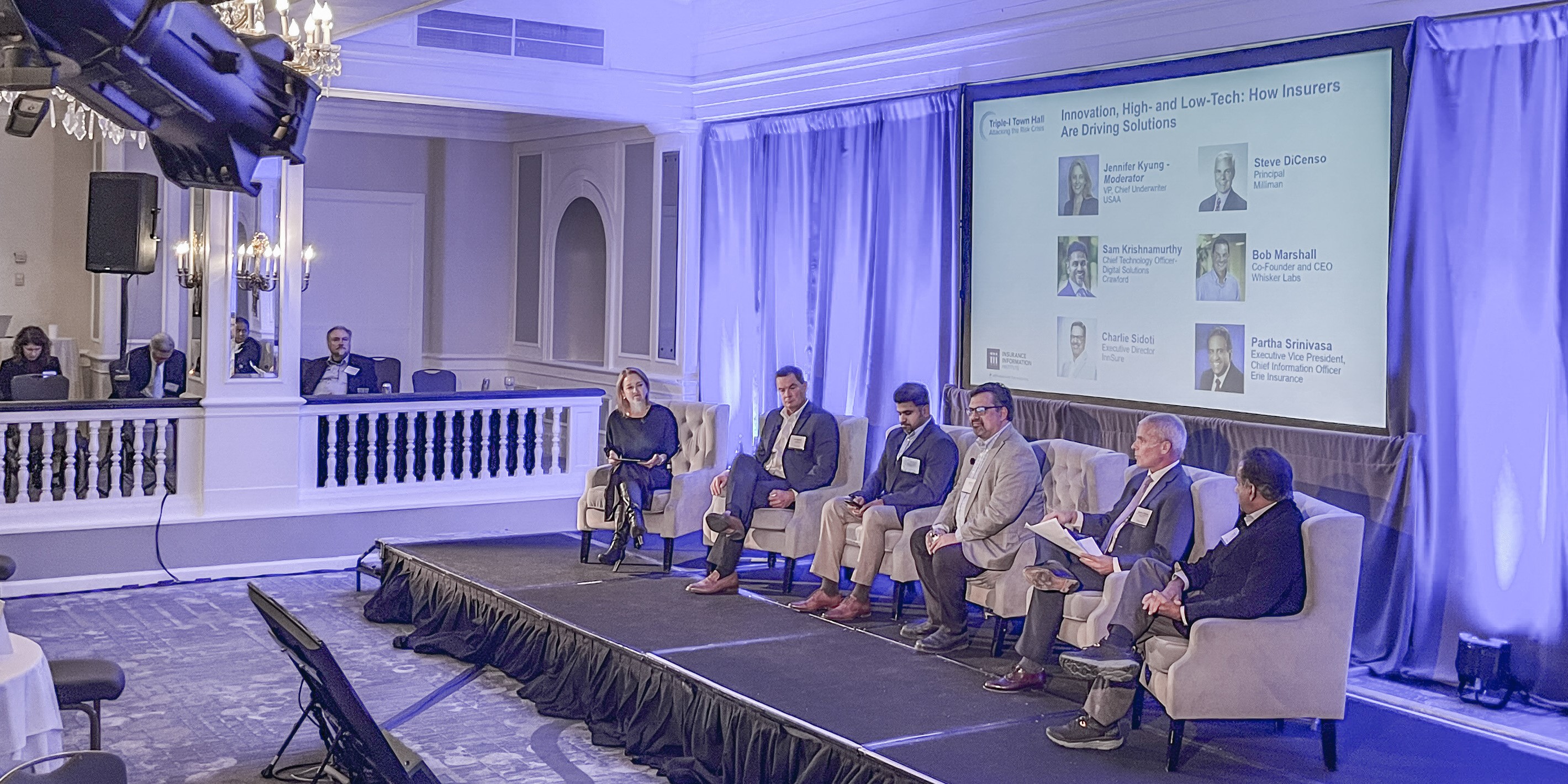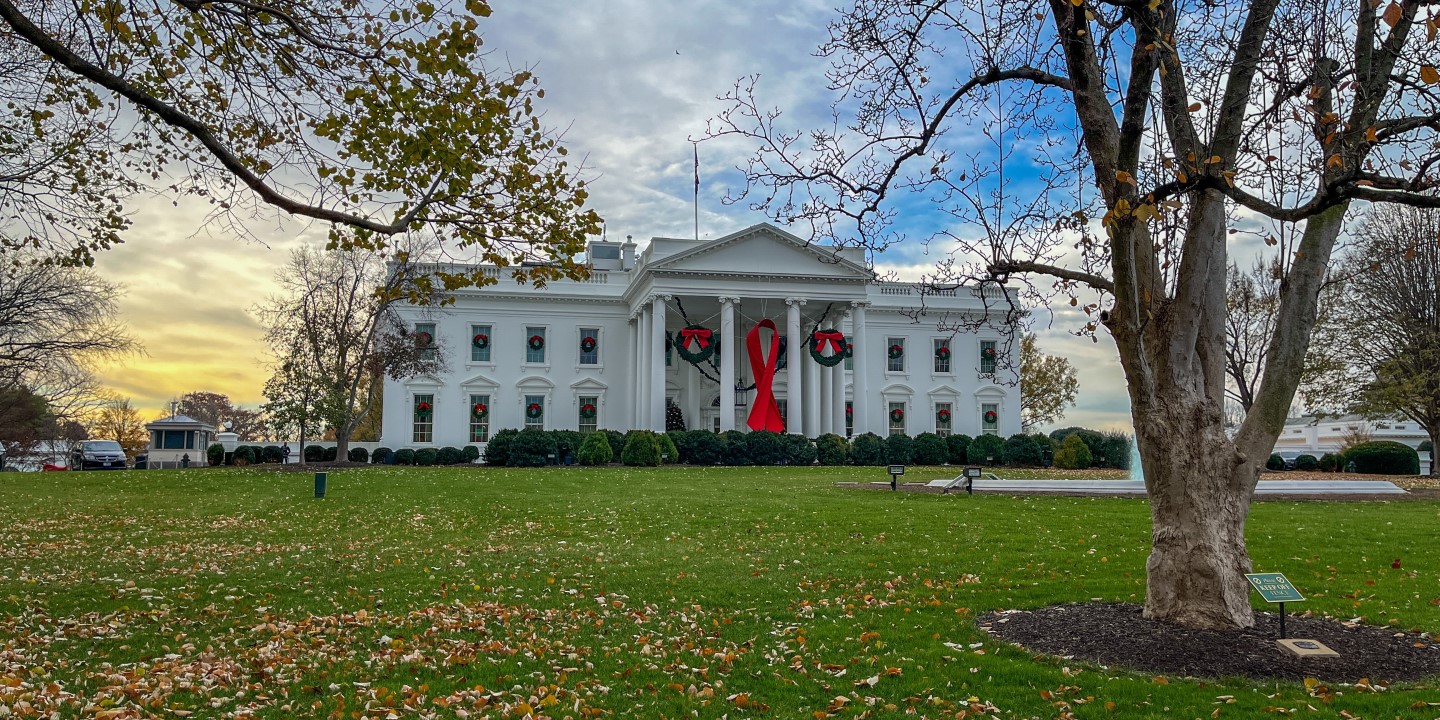Triple-I Town Hall addresses insurance industry challenges
Climate and EnergyTechnology and AIArticleDecember 8, 2023
The Insurance Information Institute promised robust conversations on a broad range of topics at its Triple-I Town Hall on Nov. 30 in Washington, D.C., but climate risk and severe weather managed to thread its way throughout all three panel discussions.
Triple-I President and CEO Sean Kevelighan opened the meeting, titled “Attacking the Risk Crisis,” with an overview of the key topics to be discussed: Climate change; innovation and technology; and legal system abuse.
In discussing the rising costs of severe weather events, Kevelighan highlighted one of the key differences between the top two costliest natural catastrophes in the U.S. — Hurricane Katrina in 2005 and Hurricane Ian in 2022. Estimated insured property losses for Katrina were $98 billion, adjusted for inflation; for Ian, losses were more than $52 billion.
Both were devastating storms, but many in the insurance industry were surprised by Ian’s impact. Kevelighan attributes this impact to the rise in legal system abuse, defined as policyholder or plaintiff attorney practices which increase costs and time to settle insurance claims.
“Why is Ian so high in lost costs? Because we just have an abundance of litigation, and we have to account for that. We have to factor that into our losses,” he said.
Below are some additional insights from panelists at the event.
Panel 1 – Climate Risk Is Spiraling - What Can Be Done?
“Most of the increase in damage (from hurricanes) to date is due to more people and more stuff, basically more exposure along the coastline. That’s pretty much the big driver of the increased damage that we’re seeing.”
– Phil Klotzbach, Research Scientist, Department of Atmospheric Science, Colorado State University.
“I think the government and other stakeholders, including the insurance industry, including the finance and banking industry, lenders, realtors and the entire real estate industry and builders — we all have a role to play. And the ‘how’ is the more interesting part. The ‘how’ is through incentives.”
– Daniel Kaniewski, Managing Director, Public Sector, Marsh McLennan
 “(Most businesses) have taken a proactive approach when it comes to disaster planning. But the other component that’s really changed in the time that I’ve been in the industry is the utilization of technology and data, and how we’re currently utilizing that today to better serve our carrier partners and their insureds as well.”
“(Most businesses) have taken a proactive approach when it comes to disaster planning. But the other component that’s really changed in the time that I’ve been in the industry is the utilization of technology and data, and how we’re currently utilizing that today to better serve our carrier partners and their insureds as well.”
– Jim Boccher, Chief Development Officer, ServiceMaster Restore
“I don’t think the average (homeowner) customer understands the risk they face. They may have heard that they live in a 100-year flood plain, but … it’s not the kind of thing people think is going to happen to them. So, I don’t think they understand the risk from a natural peril perspective. I think they really don’t understand the financial cost of ownership. Understanding that, ‘If I buy this home, what’s the actual cost of mitigating, what the true cost of flood insurance, not the price I may be paying today.’”
– Jeffrey W. Huebner, Chief Risk Officer, CSAA Insurance Group.
Panel 2 – Innovation, High- and Low-Tech: How Insurers Are Driving Solutions
“AI (artificial intelligence) is not new. And insurance companies are nothing but data companies. Everything is done by data, which is what we do … AI makes human beings smarter and do things quicker and better.”
– Partha Srinivasa, Chief Information Office, Erie Insurance
 “I don’t think you can underestimate the power of machine learning and artificial intelligence. And when you couple that with sensors and data, what can be done is incredible.”
“I don’t think you can underestimate the power of machine learning and artificial intelligence. And when you couple that with sensors and data, what can be done is incredible.”
– Bob Marshall, CEO, Whisker Labs
“The more transparency you can have around the total cost of risk enables all participants, all the different stakeholders to make better decisions about where we invest that dollar.”
– Charlie Sidoti, Executive Director, InnSure
Panel 3 – From Outdated Regs to Legal System Abuse: It Will Take Villages to Fix This
“We look at three gaps for the consumer. One is awareness gap, one is protection gap, and one is resiliency gap. We survey consumers all the time about their understandings of risk. Consumers don’t know two things: they don’t know what risk they’re at, and even the ones who do [know the risk] don’t know what they can do about it. From a protection gap … it is about, ‘Are we sending the right signals.’ You do a consumer no benefit by not telling them the truth. By giving them the appropriate signals, you lead into the final gap. Nobody’s been addressing the resiliency gap, partially because they haven’t been given the signals that resiliency, on a $6-to-$1 basis, is certainly worthwhile.”
– Tim Judge, Senior Vice President, Climate Analytics, Fannie Mae
“Litigation is pervasive in the property insurance market, and — call it social inflation, call it what you want — a larger portion of it is fraud; period, end of sentence … People look at insurance companies almost as a bank, if you will, and they have no remorse in basically trying to take them to the woodshed.”
– Fred Karlinsky, Shareholder and Global Co-Chair of Global Insurance Regulatory and Transactions Practice Group, Greenberg Traurig, LLP
